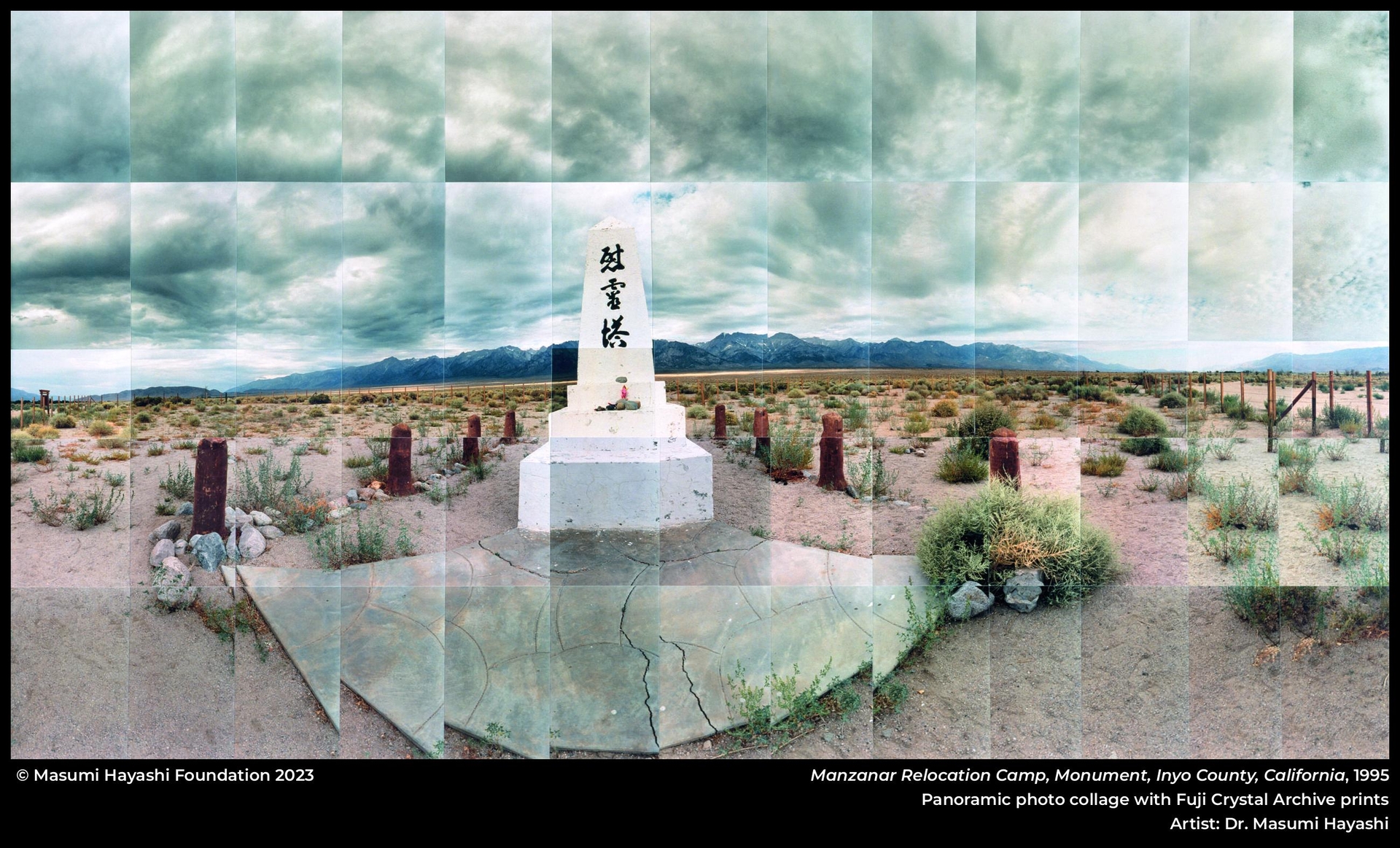
Manzanar Relocation Camp, Monument, Inyo County, California, 1995
by Dr. Masumi Hayashi
Panoramic photo collage with Fuji Crystal Archive prints, 20in. x 40in.
Research: Manzanar Relocation Camp
Location: Inyo County, California, in the Owens Valley, 225 miles north of Los Angeles.

Land: Land controlled by the City of Los Angeles for its municipal water supply.
Size: 6,000 acres.
Climate: Desert, extreme winters and summers. Mt. Whitney and Mt. Williamson could be seen in the distance making it one of the most beautiful of the camp sites.
Population Origins: Primarily Los Angeles County (8,828).
Opening date: June 1, 1942;
Manzanar began as a Wartime Civil Control Administration administered "Assembly Center", and opened on March 22, 1942; it came under War Relocation Authority jurisdiction on June 1, 1942.
Date of peak: September 22, 1942.
Peak population: 10,046.
Closing Date: Novermber 21, 1945.
Project director: Roy Nash, Harvey N. Coverley, Solon T. Kimball, and Ralph P. Merrit.
Community Analysts: John de Young and Morris E. Opler.
Newpaper(s): Manzanar Free Press (April 11, 1942 to September 8, 1945); the paper started while Manzanar was an "assembly center" and continued to publish through its transfer to WRA jurisdiction.
% who answered question 28 of the loyalty questionnaire positively: 86.9%
Number and percentage of eligible citizen males inducted directly into ARMED FORCES: 174 (2.5%).
Industry: Manzanar had a camouflage net factory which operated from June to December 1942; also a garment factory, a cabinet shop, and a mattress factory which produced goods for internal consumption.
History: Manzanar was probably the most closely guarded of all the camps, due in part to its origin as a WCCA camp, to its location within the Western Defense Command's restricted zone, and the extreme hostility of the local population.
Counting its WCCA director (Clayton Triggs), Manzanar had five directors/managers in its first eight months. Merrit took over as director on November 19, 1942 and remained in this position until the camp's closing.
Manzanar was a relatively turbulent center; the Manzanar Incident of December 1942 exposed deep rifts within the poplulation.
For further reading:
- Photographic studies of Manzanar include Ansel Adams' Born Free and Equal: Photographs of the Loyal Japanese Americans of Manzanar Relocation Center, Inyo County, California.(New York: US Camera, 1944);
- Ansel Adams and Toyo Miyatake, Two Views of Manzanar: An Exhibition of Photographs. Los Angeles: Frederick S. Wight Art Gallery, University of California, Los Angeles, 1978;
- John Armor and Peter Wight, Manzanar. Photographs by Ansel Adams. Commentary by John Hersey. (New York: Times Books, 1988).
Source: Japanese American History: An A to Z Reference, 1868 to the Present, by Brian Niiya. New York: Facts on File, 1993. This information is provided with the permission from the Japanese American National Museum and Brian Niiya, 1997.